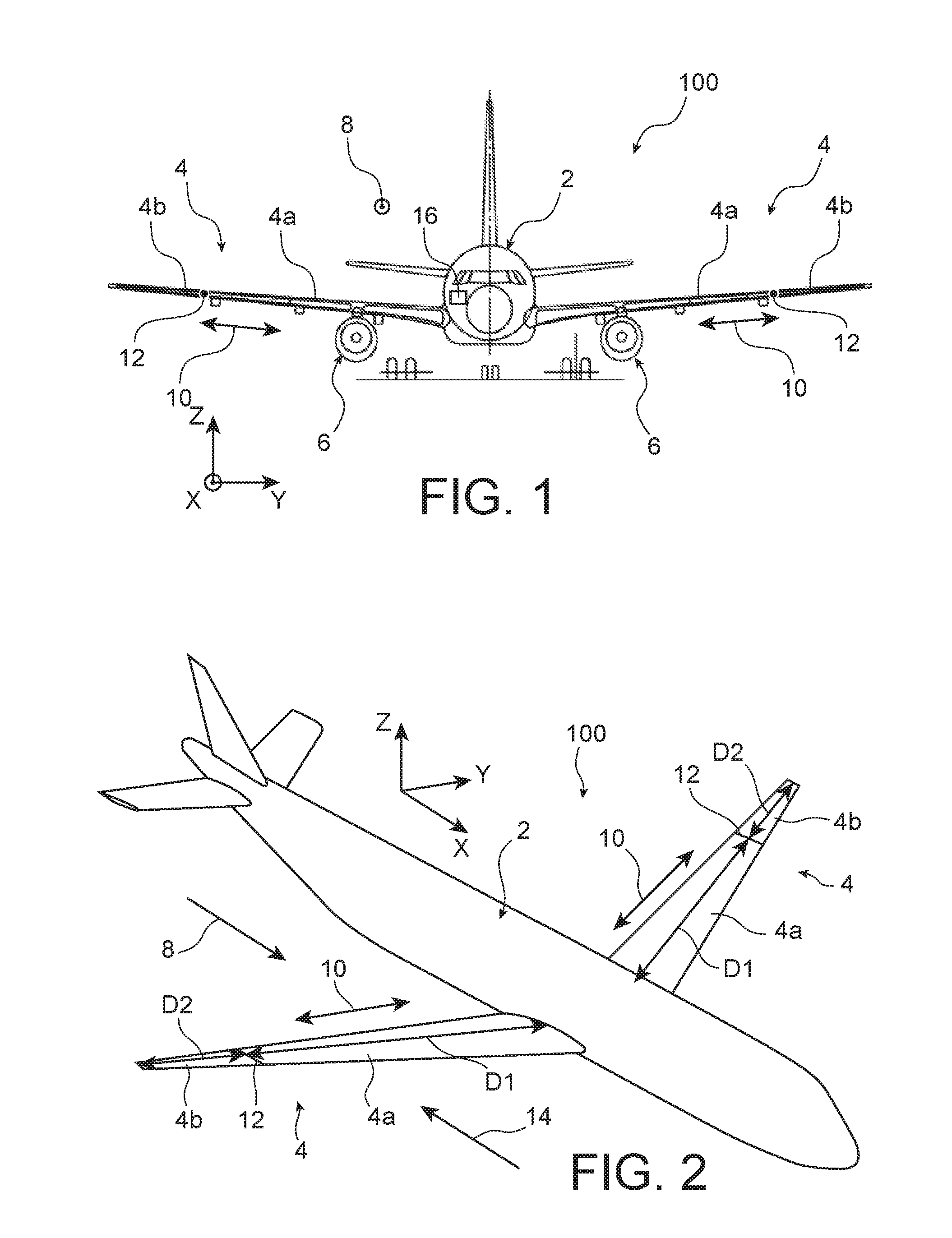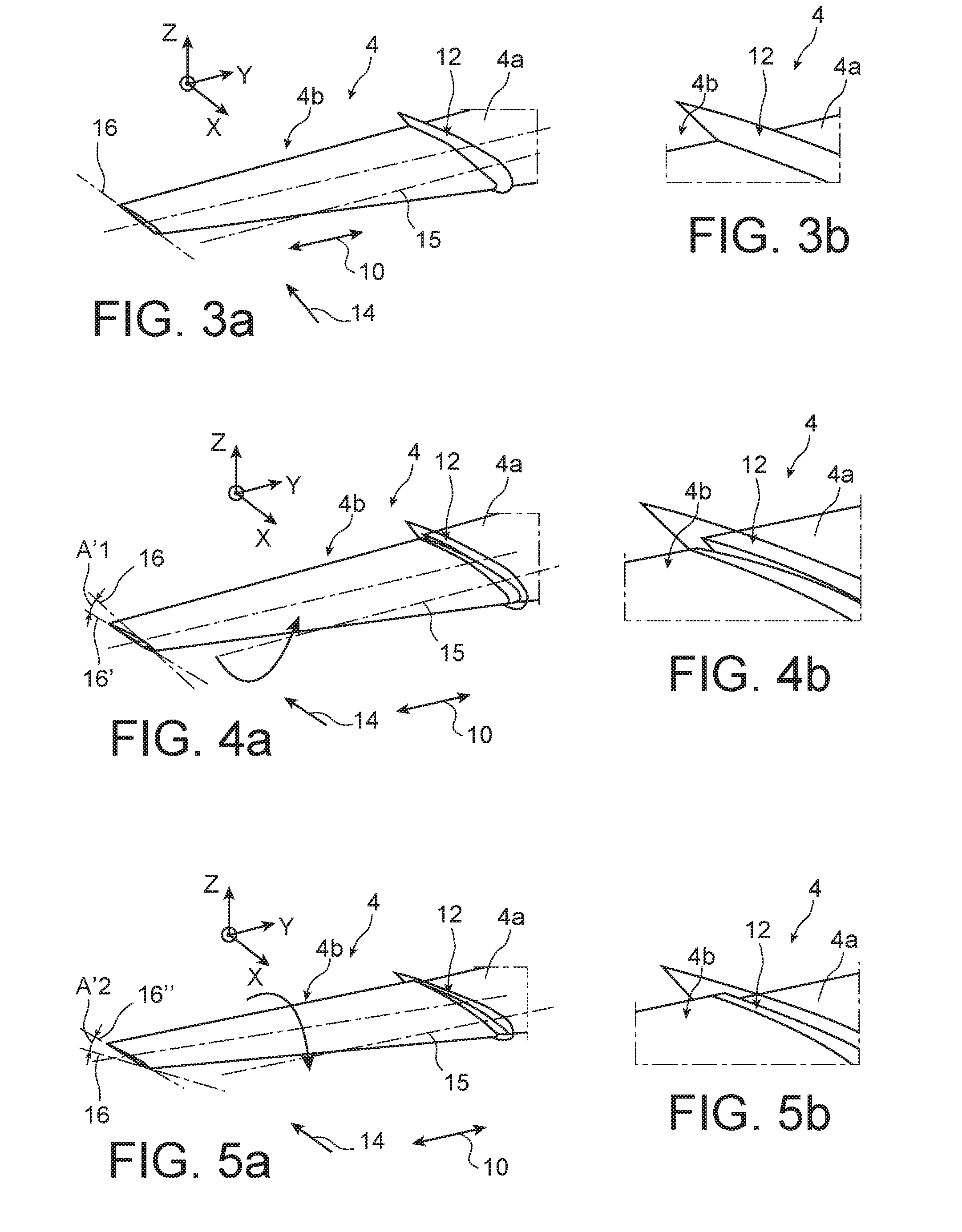Aircraft wing comprising a controllable-attack wing tip
a technology of controllable attack and wing tip, which is applied in the direction of airflow influencers, aircraft stabilisation, transportation and packaging, etc., can solve the problems of complicated design of wings that integrate this type of solution, and achieve the effect of improving the overall performance of wings
- Summary
- Abstract
- Description
- Claims
- Application Information
AI Technical Summary
Benefits of technology
Problems solved by technology
Method used
Image
Examples
Embodiment Construction
[0026]Referring first of all to FIGS. 1 and 2, there is represented an aircraft 1 in accordance with the invention including a fuselage 2, two wings 4, and a propulsion unit 6 fixed under each wing 4. One of the particular features of the invention resides in the optimized design of each of the two wings 4, which will be described in detail hereinafter.
[0027]Throughout the following description, by convention, the direction X corresponds to the longitudinal direction of the aircraft, the direction Y corresponds to the direction oriented transversely, while the direction Z corresponds to the vertical direction or height. These three directions X, Y and Z are mutually orthogonal and form a direct trihedron. Also, the terms “front” and “rear” are to be considered relative to a direction of forward movement of the aircraft, diagrammatically represented by the arrow 8.
[0028]The two wings 4 being of symmetrical design with respect to a vertical median plane of the aircraft, only one of th...
PUM
 Login to View More
Login to View More Abstract
Description
Claims
Application Information
 Login to View More
Login to View More - R&D
- Intellectual Property
- Life Sciences
- Materials
- Tech Scout
- Unparalleled Data Quality
- Higher Quality Content
- 60% Fewer Hallucinations
Browse by: Latest US Patents, China's latest patents, Technical Efficacy Thesaurus, Application Domain, Technology Topic, Popular Technical Reports.
© 2025 PatSnap. All rights reserved.Legal|Privacy policy|Modern Slavery Act Transparency Statement|Sitemap|About US| Contact US: help@patsnap.com



